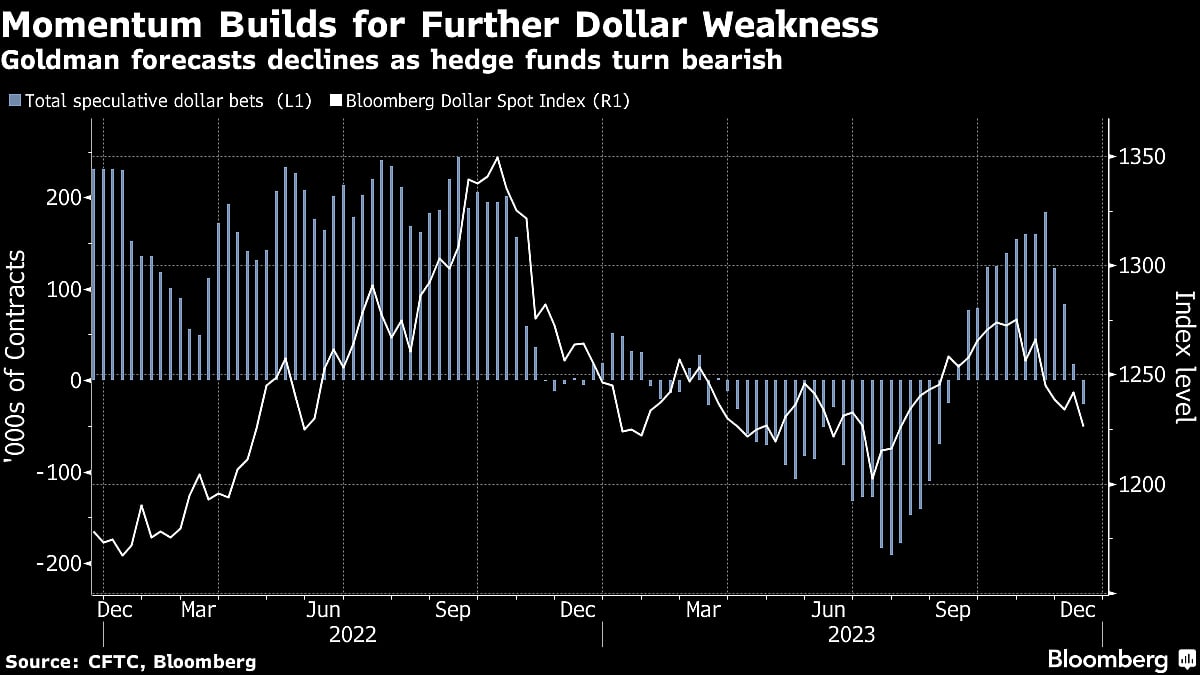Hedge Funds Turn Bearish On Dollar As Goldman Sees More Declines
Goldman Sachs Group added its voice to a chorus of expectations of a weaker dollar on signs of a Fed rate cut.

(Bloomberg) -- Goldman Sachs Group added its voice to a chorus of expectations of a weaker dollar after the US central bank’s clearest sign yet that interest-rate cuts are coming.
Goldman made sweeping changes to its exchange-rate forecasts after the Federal Reserve signaled a more-rapid move to “non-recessionary” interest-rate cuts, analysts including Michael Cahill wrote in a note on Friday. For the first time since September, hedge funds and other large speculators switched to a net short position against the dollar as of Dec. 12, according to Commodity Futures Trading Commission data.
The Bloomberg Dollar Spot Index dropped 1.2% last week and touched a four-month low after the Fed held interest rates and projected 75 basis points of reductions in 2024. Markets rushed to price in as many as six cuts, and Goldman’s economists moved to anticipate five.

“Our new forecasts incorporate more dollar weakness than before,” the Goldman analysts wrote. “The biggest revisions to our forecasts are in the rate-sensitive currencies that would have struggled under a ‘higher for longer’ rates regime,” such as the yen, the Swedish krona and the Indonesian rupiah, they wrote.
The combined position for bets across major currencies shifted to a net 26,355 contracts bearish on the dollar, in the week ending last Tuesday, the CFTC data show. The biggest shifts were for the yen, with bets on dollar gains versus the Japanese currency dropping by more than 20%, and for the British pound, where wagers on dollar declines almost doubled.
The yen soared 2% last week against the dollar, while the krona added 1.9%. Those were the biggest gains among G-10 currencies outside of Norway’s krone, which jumped more than 4% as its central bank unexpectedly lifted its key deposit rate.
Goldman sees the yen little changed at 142 per dollar in six months, significantly stronger than its prior estimate of 155. It also boosted projections for the Australian and New Zealand dollars by at least 9% over the same horizon.
“We see the most ‘room to run’ from current levels in pro-cyclical currencies that should benefit from the Fed loosening its grip on financial conditions and adding to the case for a soft landing,” the strategists wrote. That group includes the British pound, the South Korean won and the South African rand.
More stories like this are available on bloomberg.com
©2023 Bloomberg L.P.